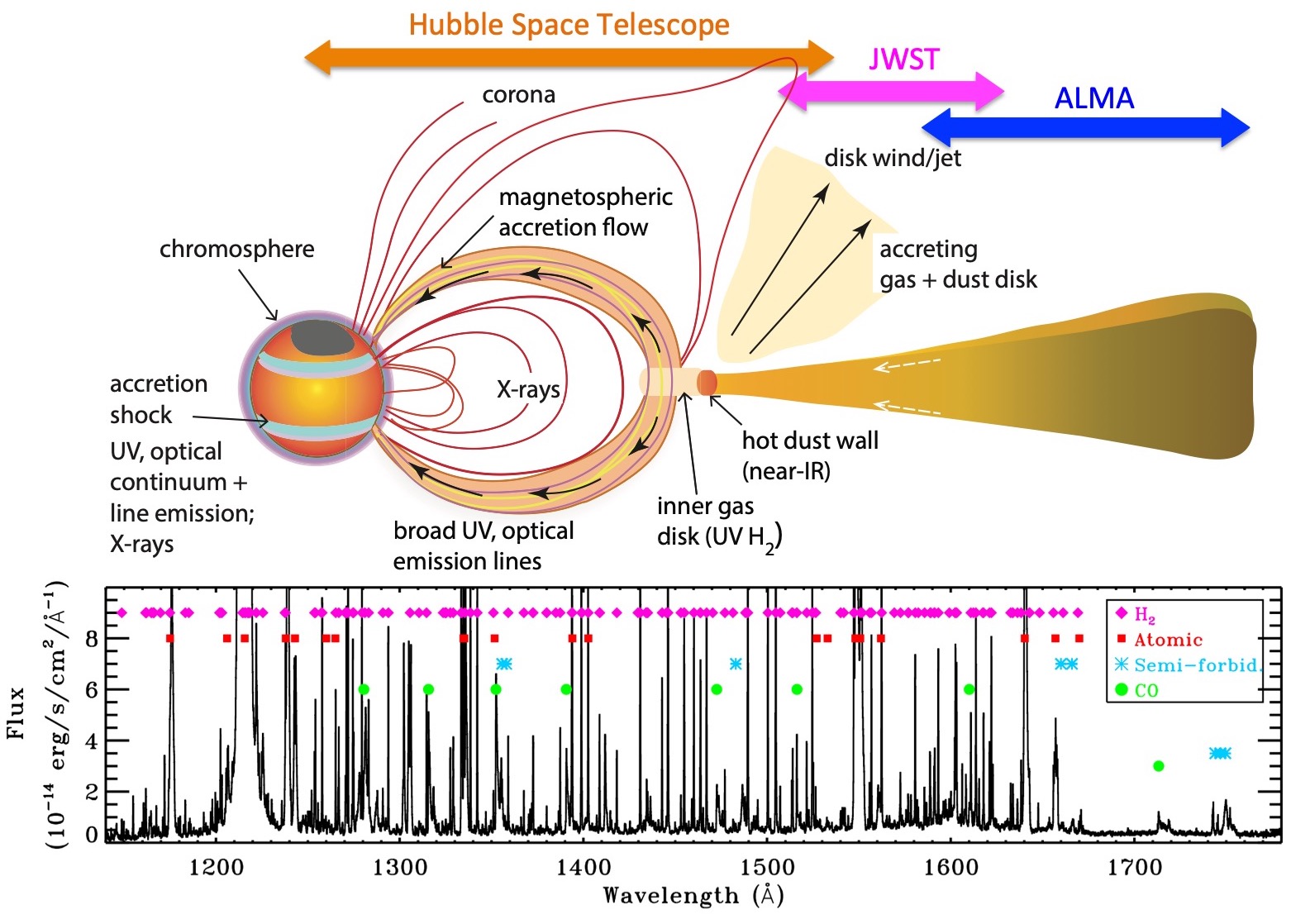Outflows and Disks around Young Stars: Synergies for the Exploration of Ullyses Spectra
The ODYSSEUS team is made up of ~100 international T Tauri star experts who are using the Hubble UV Legacy Library of Young Stars as Essential Standards (ULLYSES) Director’s Discretionary program to
- measure how the accretion flow depends on the accretion rate and magnetic structures,
- determine where winds and jets are launched and how mass loss rates compare to accretion, and
- establish the influence of FUV radiation on the chemistry of the warm inner regions of planet-forming disks.
In addition to attaining COS and STIS observations using over 500 HST orbits, ODYSSEUS is attaining ancillary data in wavelengths ranging from X-ray to sub-mm.

Support for this work provided by NASA through grant number AR 16129 from the Space Telescope Science Institute, which is operated by AURA, Inc., under NASA contract NAS 5-26555.
